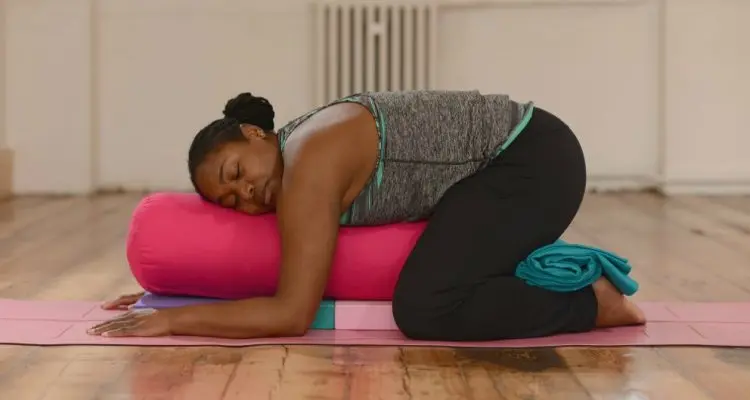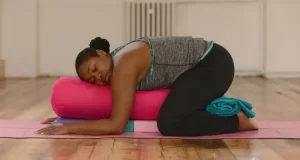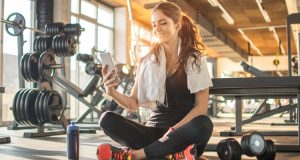Yin Yoga, a gentle and introspective practice, provides a sanctuary of calm amidst the busyness of modern life. In contrast to more dynamic yoga styles, Yin Yoga focuses on long-held, passive poses that gently stretch and target the deeper layers of connective tissues and joints.
This article delves into the essence of Yin Yoga, its unique principles, benefits, and how it offers a pathway to inner peace, increased flexibility, and emotional well-being.
Understanding Yin Yoga
Yin Yoga is rooted in the ancient Taoist tradition and was brought to the West by martial arts expert and yoga teacher Paulie Zink, as well as the influences of Paul Grilley and Sarah Powers.
Also Read
This practice emphasizes long-held poses, typically ranging from one to five minutes or more, allowing for deep release and relaxation.
Yin Yoga targets the fascia, ligaments, tendons, and joints, working on a deeper level than the more superficial muscles.
The Principles of Yin Yoga
1. Stillness and Surrender
Yin Yoga invites practitioners to embrace stillness and surrender into each pose, letting go of any striving or pushing. The emphasis is on softening and allowing the body to naturally release and open.
2. Gentleness and Patience
Yin Yoga encourages a gentle and patient approach. It is not about forcing or achieving a specific outcome but rather about respecting the body’s limitations and honoring its unique needs in each moment.
3. Finding Edge and Sensation
Yin Yoga involves finding the appropriate edge in each pose – a place where sensation is felt but not discomfort or pain. It is a delicate balance between effort and relaxation, allowing the body to gradually release tension and open up.
4. Breath and Mindfulness
Yin Yoga emphasizes deep and mindful breathing to anchor the mind in the present moment. The breath serves as a bridge between the body and mind, fostering a state of relaxation, clarity, and self-awareness.
Benefits of Yin Yoga
1. Deep Stretching and Improved Flexibility
Yin Yoga targets the connective tissues, fascia, and joints, promoting increased flexibility and range of motion. The long holds in poses help release tension, restore elasticity, and improve overall joint health.
2. Stress Reduction and Relaxation
Yin Yoga offers a sanctuary for relaxation and stress relief. The practice activates the parasympathetic nervous system, triggering the relaxation response and reducing the effects of chronic stress.
3. Enhanced Mindfulness and Self-Awareness
The slow and meditative nature of Yin Yoga allows practitioners to cultivate mindfulness and deepen their self-awareness. By tuning into the sensations, thoughts, and emotions that arise during the practice, individuals can develop a greater understanding of themselves and their internal landscape.
4. Improved Energy Flow
Yin Yoga focuses on stimulating the subtle energy channels, known as meridians or nadis. By opening up these energy pathways, the practice promotes a balanced flow of Qi (life force energy) throughout the body, supporting overall health and vitality.
5. Emotional Healing and Release
Yin Yoga provides a safe space for emotional healing and release. The long-held poses can activate and release stored emotions, allowing practitioners to process and let go of emotional blockages.
6. Joint Health and Injury Prevention
The gentle and sustained stretching in Yin Yoga nourishes the joints, improves circulation, and helps prevent injuries. It promotes joint mobility, lubrication, and overall joint health, especially in areas prone to stiffness and tightness.
7. Balanced Yin-Yang Energies
Yin Yoga complements and balances the more yang-like practices, such as dynamic yoga or other forms of exercise. By incorporating Yin Yoga into a well-rounded practice, individuals can cultivate a harmonious balance between the active and passive energies within the body and mind.
Yin Yoga Poses and Sequences
Yin Yoga includes a wide range of poses, each targeting different areas of the body. Some common Yin Yoga poses include:
1. Butterfly Pose (Baddha Konasana)
This pose gently stretches the hips, inner thighs, and lower back, promoting a deep release in the pelvic area.
2. Dragon Pose (Lunges)
Dragon Pose stretches the hip flexors, groin, and quadriceps, offering a gentle opening for the hips and thighs.
3. Child’s Pose (Balasana)
Child’s Pose provides a soothing stretch for the spine, hips, and shoulders, promoting relaxation and releasing tension in the lower back.
4. Sphinx Pose
Sphinx Pose targets the lower back, gently elongating the spine and stimulating the energy flow along the back body.
5. Supported Bridge Pose
Supported Bridge Pose provides a gentle stretch for the spine, hips, and chest, promoting relaxation and opening the heart center.
6. Reclining Butterfly Pose (Supta Baddha Konasana)
Reclining Butterfly Pose offers a deep stretch for the hips, inner thighs, and groins while promoting relaxation and a sense of surrender.
7. Thread the Needle Pose
Thread the Needle Pose stretches the shoulders, upper back, and neck, releasing tension and improving mobility in the upper body.
Yin Yoga sequences are often designed to target specific areas of the body or address particular needs. These sequences can be customized based on individual preferences and goals, allowing practitioners to create a personalized Yin Yoga practice.
Incorporating Yin Yoga into Your Practice
To incorporate Yin Yoga into your practice, consider the following:
1. Finding a Qualified Teacher
It is beneficial to learn Yin Yoga from a qualified teacher who can guide you in understanding the principles, alignment, and modifications specific to this practice.
2. Listening to Your Body
Honor your body’s limitations and practice with self-compassion. Yin Yoga invites you to listen to your body’s wisdom and adjust poses as needed, allowing for a comfortable and supportive practice.
3. Creating a Peaceful Environment
Set up a quiet and tranquil space for your Yin Yoga practice. Create an ambiance that supports relaxation, such as dim lighting, soft music, and a comfortable temperature.
4. Using Props and Support
Props such as bolsters, blankets, blocks, and straps can enhance your Yin Yoga practice. They provide support and help you find a comfortable position in each pose, allowing for a deeper release.
5. Breathing Mindfully
Pay attention to your breath throughout the practice. Cultivate a slow, deep, and steady breath, allowing it to guide you deeper into relaxation and mindful presence.
6. Practicing Regularly
Consistency is key in Yin Yoga. Aim to incorporate regular Yin Yoga sessions into your weekly routine to fully experience its benefits and deepen your practice.
Yin Yoga offers a gentle and meditative practice that allows individuals to slow down, connect with their inner selves, and experience deep physical and emotional release.
By embracing stillness, surrender, and self-compassion, practitioners can enhance their flexibility, promote relaxation, and cultivate mindfulness. Yin Yoga serves as a sanctuary of serenity, offering a pathway to inner peace, balance, and transformation amidst the busyness of everyday life.
So, unroll your mat, find stillness within, and embark on a journey of deep stretching, self-discovery, and profound tranquility with Yin Yoga.














